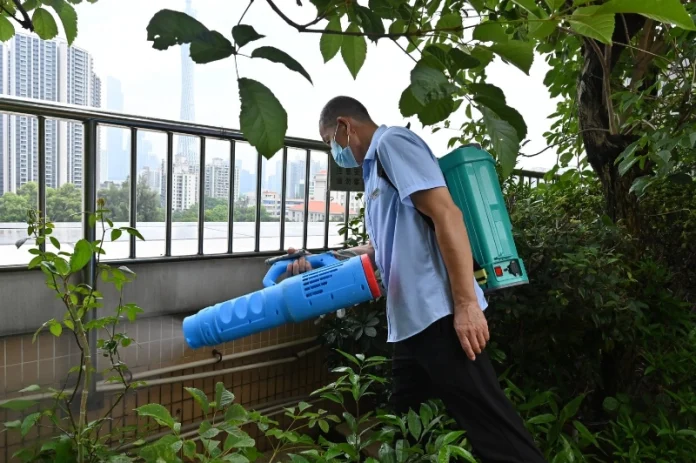More than 7,000 cases of mosquito-borne chikungunya fever have been reported in China’s Guangdong province since July, prompting measures similar to those taken during the COVID-19 pandemic.
In Foshan, the city hardest hit, patients with chikungunya fever must remain in hospital, where their beds are protected by mosquito nets. They can only be discharged after testing negative or after a week of treatment.
The virus, which is spread through the bite of an infected mosquito, causes fever and severe joint pain that can sometimes last for years. Although outbreaks of chikungunya fever are rare in China, they are common in South and Southeast Asia and parts of Africa.
In addition to Foshan, cases have been reported in at least 12 other cities in the southern province of Guangdong. Nearly 3,000 cases have been reported in the last week alone.
On Monday, the first case was reported in Hong Kong, where a 12-year-old boy developed a fever, rash and joint pain after travelling to Foshan in July. The virus is not contagious and is spread only when an infected person is bitten by a mosquito, which then bites others.
Officials say all reported cases so far have been mild, with 95% of patients discharged within seven days. Nevertheless, the cases have caused some panic as the virus is not widely known in the country.
“It’s scary. The long-term effects seem very painful,” one user wrote on the Chinese social network Weibo. The US has urged everyone travelling to China to exercise “increased caution” following the outbreak.
Authorities in Guangdong province have promised to take “decisive and effective measures” to prevent the spread of the disease. Anyone with symptoms such as fever, joint pain or rash is strongly advised to go to the nearest hospital for a virus test.
Authorities have ordered residents to remove stagnant water from their homes, such as flower pots, coffee machines or spare bottles, and warned of fines of up to 10,000 yuan ($1,400) for non-compliance.
They are also releasing giant “elephant mosquitoes” that can devour smaller insects that carry chikungunya fever, and an army of mosquito-eating fish.
Last week, Foshan authorities released 5,000 of these larvae-eating fish into city lakes. In some areas of the city, drones are even being deployed to detect sources of stagnant water.
In some neighbouring cities, a 14-day home quarantine was imposed on people arriving from Foshan, but this ban has since been lifted. Some have compared these measures to those taken during the pandemic and questioned their necessity.
What is chikungunya?
Most people bitten by an infected mosquito develop symptoms of chikungunya within three to seven days. In addition to fever and joint pain, other symptoms include rash, headache, muscle pain and joint swelling.
In most cases, patients feel better within a week. However, in severe cases, joint pain can last for months or even years. Newborns, elderly people and people with underlying conditions such as heart disease or diabetes are at risk of developing a more severe form of the disease.
There is no cure for chikungunya, but deaths from the disease are rare. The virus was first identified in Tanzania in 1952. It then spread to other countries in sub-Saharan Africa and Southeast Asia.
According to the World Health Organisation (WHO), the best way to prevent the spread of the virus is to reduce the amount of standing water where mosquitoes breed.
